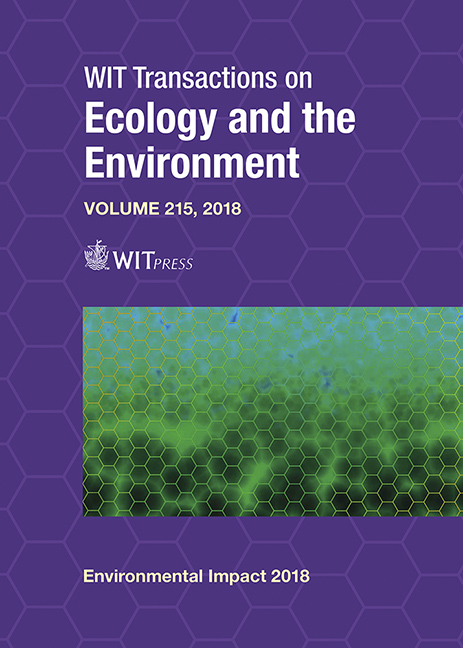USING POLYCARBOBETAINES FOR CU RECOVERY FROM CATHOLYTES GENERATED BY ELECTRODIALYTIC TREATMENT OF SEWAGE SLUDGE ASH
Price
Free (open access)
Transaction
Volume
215
Pages
11
Page Range
433 - 443
Published
2018
Paper DOI
10.2495/EID180391
Copyright
WIT Press
Author(s)
GUNVOR M. KIRKELUND, JULIA MOUTON
Abstract
Electrodialytic remediation is a process that uses a low current density to remove heavy metals from different waste matrixes such as sewage sludge ash (SSA). The SSA is suspended in water and separated from the anolyte and catholyte compartments by ion exchange membranes. The heavy metal cations are separated from the ash and electromigrate into the catholyte, where they can electrodeposit on the cathode. Despite this electrodeposition, the catholyte contains heavy metals after the remediation process. Newly developed water-soluble polycarbobetaines (PCBets) have shown potential for selective removal of metal ions and especially Cu in synthetic solutions. In this study, it was investigated for the first time if the PCBets can remove Cu from the catholytes generated by electrodialytic remediation. Four electrodialytic separation experiments were made, treating SSA in slurries at liquid to solid ratios 3.5:21. The Cu removal from the SSA was between 6–30%, resulting in catholyte concentrations between 0.18–4.34 mg Cu/l. The Cu selective PCBet, PCEAC was added to the four different catholytes for Cu extraction after a pH adjustment to around five of the catholytes. The removal of Cu was almost negligible by the PCEAC, regardless of the initial Cu concentration. Thus, the samples were spiked with Cu to concentrations between 77–319 mg/l and then the removal of Cu was tested by the addition of PCEAC or PCEAMC from the catholyte solution, resulting in Cu removals up to 70% and 40% respectively. However, a significant co-adsorption of Al, Ca and Zn was also seen. Based on the results, there is a potential in combining the use of PCBets to electrodialytic treatment, however the metal concentration in the catholyte should be increased and the PCBets should be further developed to avoid co-adsorption.
Keywords
electrokinetic remediation, polymer, heavy metal, remediation, precipitation, valorisation, wastewater





